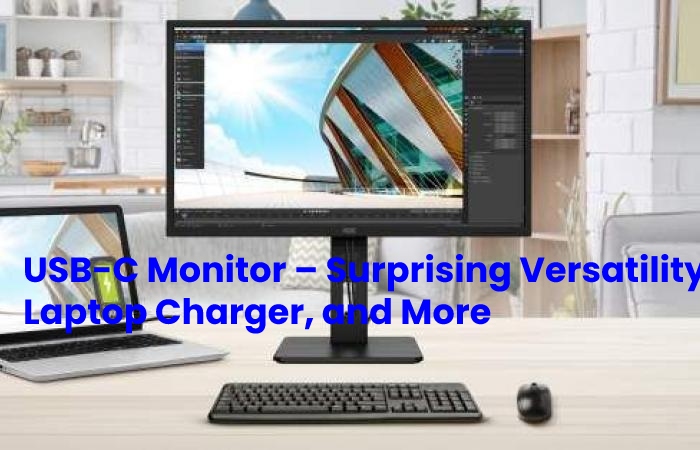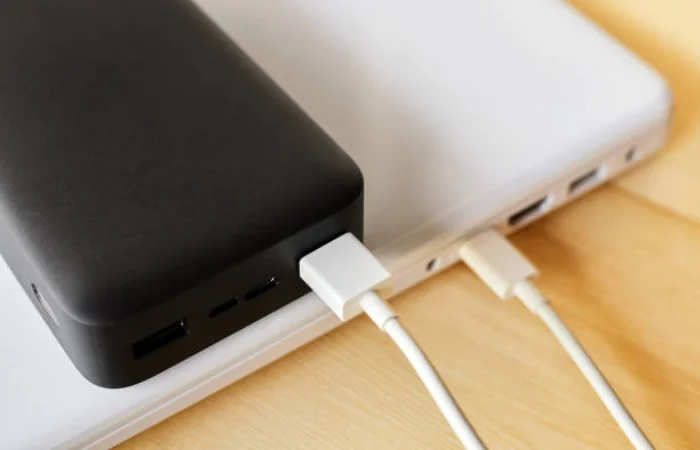Table of Contents
How to choose a USB-C monitor?

USB-C Monitor – For now, USB-C connections create on almost all types of electronic devices. This USB connection, originally associated primarily with Mac notebooks, is now found in laptops of all kinds and mobile phones, power banks, gaming devices, and peripherals. Monitors do not escape the list of peripherals that have adopted this comfortable and modern connectivity standard, and not only as a way to transport data or power between devices but also for video and audio signals.
A USB-C monitor takes advantage of all the good things USB-C has: its thin, reversible connector, high-speed data transfers, and the many protocols it can carry. In addition, to fulfill its primary function, it uses the Display Port alternate mode included in the USB-C specification. That means that a traditional Display Port video and audio signal can be carried over the modern USB-C connection, leaving enough bandwidth for other functions.
Suppose we are seeing a new monitor that can make the most of that USB-C port of our device. The most important thing is that any USB-C monitor should have a description below.
The simplicity of a single cable with Surprising Versatility
Perhaps the most notable advantage of using a USB-C monitor is the convenience of not having to deal with multiple wires or adapters. USB-C connectivity in a monitor allows you to connect it directly to your laptop without spending more money or carrying bulky adapters.
The video signal flowing through a USB-C cable is Display Port. So any USB-C to HDMI adapter will have to do some signal processing, potentially degrading the quality of the video. In addition, the fact that you do not have to use additional adapters also avoids the delay added to the video signal since, as is well known, the input lag is one of the most significant disadvantages to enjoy a monitor.
Second thought, Surely we have not bought that magnificent 4K monitor to have a lower than average video quality because of unnecessary adapters. A simple connection has the advantage of having less to carry and offering a better signal with all its quality intact.
Using Adapter
Another common problem with using adapters is that they tend to break. Carrying an adapter with us for when we may need it can strain those delicate connections and cables. There is nothing worse than removing the adapter the moment we need it to end up realizing that it no longer works. Many times, going to the store for a new one or waiting a few days for another to be sent to us is not an option. A USB-C cable is as economical and straightforward as any other cable we have. Which means that it won’t break unless we mistreat it.
In addition to the ease of the USB-C cable, it is worth mentioning its surprising versatility. Never before has such a simple and inexpensive cable been able to do so many things at once. A single USB-C line can carry Display Port video signals up to 8K @ 60Hz, digital audio signals, ultra-fast data over USB 3.1, as well as up to 100 watts of power to charge or operate our devices (we’ll talk more about that later). That means that our monitor can easily integrate USB hubs. We can think of memory card readers, webcams, and any other USB device without the need for additional cables going from the monitor to the computer.
Forget the Laptop Charger at Home
The second significant advantage that a USB-C monitor can offer is the option. To deliver up to 100 watts of current to our devices through the USB Power Delivery specification. That means that we can leave the laptop power supply in the backpack. And also, at home, because of the same cable that sends the video from the laptop to the monitor. It will provide enough current to keep it powered and charged. However, this is an optional feature that not all USB-C monitors implement. So we must read the specifications carefully to buy a monitor that suits our needs.

Specifications:
When consulting the specifications of the USB-C monitor, we will find the nominal power output expressed in watts. The typical laptop will require between 40 and 60 watts for light to medium intensity use. Even power-hungry laptops that require up to 85 watts of power will do fine at 60 watts as long as we don’t perform power-intensive tasks like video encoding or the constant rendering of 3D graphics. (The laptop will fall back on the battery for those power demand peaks). We propose always looking for a USB-C monitor. With USB Power Delivery unless we do not intend to use it with laptops or other mobile devices.
Not many years ago, it was easy to find ourselves surrounded by wires at our work table. Almost all laptops had their type of charger, as did mobile phones, plus USB cables for our mouse and keyboard. FireWire or eSATA for high-speed data transfers, and HDMI or Display Port for video, as well as VGA. and DVI. Even the most recent standards, like Thunderbolt 1 and 2. Meantone more type of cable that had to hide in a drawer. It doesn’t take much imagination – we’ve all had to deal with a lot of tangled cables. Thanks to USB-C, that’s a thing of the past.
Currently, USB-C not only brings all these standards together in a single cable. But it also applies to all kinds of devices. Mobile phones have quickly adopted USB-C ports for charging and in high-end models. These same USB-C also harbors production Display Port signals. With such a phone. Consuming a USB-C monitor also gives us a quick way to display the phone’s content on a larger screen. Plus, as time goes on. The number of devices with USB-C ports for charging, data, or video is only increasing.
Also Read: Best Laptop Cooling Pad – Description, Types, and More
